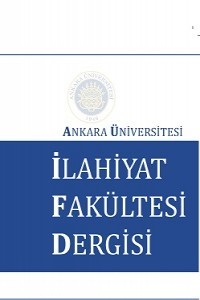Şia-Mutezile Gaybet Tartışması (Kadı Abdulcebbar-şerif Murteza)
Ýmamî Þiilik’te Gaib Ýmam’a inanç, sadece itikadýn temel ilkesi deðil, ayný zamanda dini yapýnýn esasýdýr.1 Ýmamîler’in inancýna göre, onbirinci Ýmam Muhammed b. Hasan Askeri’nin oðlu onikinci Ýmam Muhammed el-Mehdi, 260/873-874 yýlýnda ‘adaleti’ tesis etmek amacýyla tekrar yeryüzüne dönmek üzere, teknik tabiri ile, gaybet’e girmiþtir. Bu tarih, Ýmamîler için Küçük Gaybet (el-Gaybet es-Suðrâ)’in baþlangýcýdýr.2 Þiilerin rivayetlerine göre Küçük Gaybet dönemindeki imam, aktif siyasi güce sahip olamasa da, sefir ve vekil ünvaný ile dinî-adlî otorite verdiði yakýn, güvenilir, alim ve fakih kiþilerle, gaybeti halinde gerekli gördüðü kiþileri kabul edip görüþmek, mali iþleri düzenlemek, özel ve genel müþkilatý çözmek, dört sefirden baþkalarýný tayin etmek ve Küçük Gaybeti bitirmek gibi iþler yaparak sosyal ve dini yapýyý idare ve fýkhî otorite icra ediyordu.3 ‘’Ýmamlara niyabet” sistemi, son Vekil- ’in, 329/941’de ölümüyle sona ermiþ ve Büyük Gaybet (el-Gaybet el-Kubrâ), devri baþlamýþtýr.
Anahtar Kelimeler:
Şia-Mutezile, Gaybet, Tartışması
The Polemics Between the Shi’a And the Mu’tazilah on the Ghaybah (al-Qâdî Abd al-Jabbâr and al-Sharîf al-Murtadâ)
The Polemics Between the Shi’a And the Mu’tazilah on the Ghaybah (al-Qâdî Abdal-Jabbâr and al-Sharîf al-Murtadâ) The belief of the Ghaybah in the Ýmamite Shi’a is notonly one of the basics of the credo, but also is the essential principle of the total structure of thereligion. After the concealement of the twelfth Imam Muhammad b. al-Hasan al-Askerî in 256/874, which the Imâmites named this period as the Small Occultation (al-Ghaybay al-Sughrâ),they managed to handle this intercession period by creating the ‘’Proxy/Deputy of the Imam”system. When the last Proxy/Deputy died in 329/941, and the prolonged occultation of the Imamcaused disappointment and despaire for the public, the Imâmite had entered into a new era whichthe ulama had to sort this problem out.The Shi’ite ulama, by creating a new formulation for the legitimization of the concealement, theynamed this advent period as the Great Occultation (al-Ghaybah al-Kubrâ), and transferred theHidden Imam into Promised Mahdi, who one day, when God permites, will return and fill the globewith justice and equity. This doctrinal evolution, created the Ghaybah literature. The success ofthe ulamâ in legitimazing Imam’s Ghaybah, and creation of such literature, provided them toobtain the authority of the Hidden Imam to be named as the Walayât al-Fakîh.The opponents of Shi’a had refuted the belief of Ghaybah. The Shi’ites responded them andwhemently defended this belief. Consequently, a vast polemic literature of ‘’Refutation (Raddiya)”has come into being. One of them occurred between the Mu’tezilite great mutakallîm-scholar alQâdî ‘Abd al-Jabbar (d. 415/1020) and his disciple Imamite mutakallîm-scholar al-Sharîf alMurtadâ (d. 436/1044). In his time the responsibility of defending the Imâmite doctrine ofGhaybah fell on him. He wrote al-Shâfî fi’l Imâmah, in reply to the Mu’tazilite al-Qâdî ‘Abd alJabbâr’s refutation of the Imâmate in his al-Mughnî fî Abwâb al-Tawhîd wa al-‘Adl. In al-Shâfî, alMurtadâ deals with the question of ghaybah within the Imâmate. Kâdî’s critisizm of ghaybah restsupon two questions; namely holding the individuals with the religious obligations (al-taklîf), andthe implementation of the penalties (iqamat al-hudûd) become impossible during the absence ofthe Imam, as the Ýmâmites see him vital for these two impositions
Keywords:
Polemics, Shi’ites Mu’tazilites, the Hidden Imâm (al-Imâm al-Ghâib), the Occultation (al-Ghaybah),
- ISSN: 1301-0522
- Yayın Aralığı: Yılda 2 Sayı
- Başlangıç: 1952
- Yayıncı: ANKARA ÜNİVERSİTESİ > İLAHİYAT FAKÜLTESİ
Sayıdaki Diğer Makaleler
Ebû Bekir el-Hallâl: Ahmed b. Hanbel in Öğretilerinin Derleyicisi
Ziyauddin AHMED, Ramazan ÖZMEN
İnsan Onurunun İslam ve Hıristiyan Geleneklerindeki Temelleri
Kur'ân'da "Dünya" ve "Arz" Kelimelerinin Kullanımı
Swinburne ve İlâhi Zamansallık
Şia-Mutezile Gaybet Tartışması (Kadı Abdulcebbar-şerif Murteza)
Alevîlik Bektaşîlik Yazıları, Alevîliğin Yazılı Kaynakları, Buyruk, Tezkire-i Şeyh Safî
Safiyyüddîn Abdülmümin el-Urmevî'nin er-Risâletü'ş-Şerefiyye'sinde Mûsikî Matematiği
Tuğrul YÜRÜK, Recai DOĞAN, Recep YAPAREL, Öznur ÖZDOĞAN, Remziye YILMAZ
